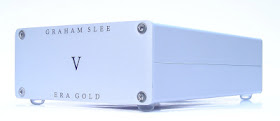
The Magnepan 1.6/QR is a 2-way Quasi-Ribbon Planar speaker. My previous experience with planar speakers had been limited to a pair of Quad ESL-63s and a set of Magnepan SMGs. The Quad ESL-63 has always been one of my holy grail speakers but I was worried about children, pets and my own clumsiness around a high voltage electrostatic panel. The Magnepan seemed like a good compromise as I had a high current amplifier to run them with.
Upon arrival of the speakers, I had my fellow audiophile come over and help me handle the long 80lb box down my basement steps. The 1.6s were soon unboxed, unwrapped and mounted on the stock speaker stands. They certainly are imposing speakers, standing just a bit shorter than me. I shuffled the Maggies about a bit, pulling them some four feet away from the back wall and some three feet from the sides. I threw on a quick CD to make sure everything was working and was happy to hear music coming out of both channels. My friend suggested we try a known LP, so I threw on a copy of Steely Dan's 'Aja' and settled back into the sofa.
My ears were met with a very aggressive bright forward sound but as my ears started getting used to the change in sound I found that the soundstaging and details were simply amazing. Cymbals and voices were lifelike, making my old box speakers sound muddy in comparison. Bass response was different and lighter than the UREIs - which is to be expected since those big speakers have two 15" Eminence drivers. However the Magnepan's bass was extremely fast and articulate.
We then threw on an original copy of the Beatles 'Rubber Soul' and were amazed by the vocal delivery and realism. But there was still a bright spotlight on the upper treble that was annoying. My friend suggested a cartridge loading change. My Dynavector 10x5 was currently loaded at 47k which can cause a rise in the treble. So I took off the top of the Threshold FET-10/PC and via the dipswitch changed the loading to 1K.
The change was certainly for the better as the next record showed - Willie Nelson's 'Stardust' was sublime as was Van Morrison's 'Saint Dominic's Preview'. Further listening on a variety of records revealed a speaker that has a tremendous amount of detail and the ability to throw a large soundstage. Instruments and voices hung in their own space and the music flows as an organic whole. With many standard dynamic speakers you can have (let's say) a gentle ticking of a stick that gets washed out by the crescendo of a guitar. However with the Magnepans the picture never fell apart like that, keeping the different intruments and vocalists distinct from each other. This neat trick allowed me to 'see' into the recording further than before.
Weaknesses? Lower bass doesn't growl like my big UREIs. Bass isn't exactly deficient, but it doesn't plummet the depths like big box speakers do. There is also less 'slam' and dynamics to drums as the excursion of the Magnepan can't match that of a set of big woofers. The Magnepans are also a little cruel with poor recordings, but the music was still enjoyable. Any speaker is a set of trade-offs but in their price range the Magnepans are certainly worth checking out. Highly recommended!
Stay tuned as I'll be playing with stands and perhaps a crossover upgrade in the future.

System:
preamp: Threshold FET-10/HL
phono preamp: Threshold FET-10/PC
amplifier: Threshold S/500
analog: VPI HW19 MkIII - Rega RB300 with Incognito wiring - Dynavector 10x5
speakers: UREI 813A loudspeakers
speaker cable: Canare Quad
Interconnects: Cardas Crosslink and Belden
.




















